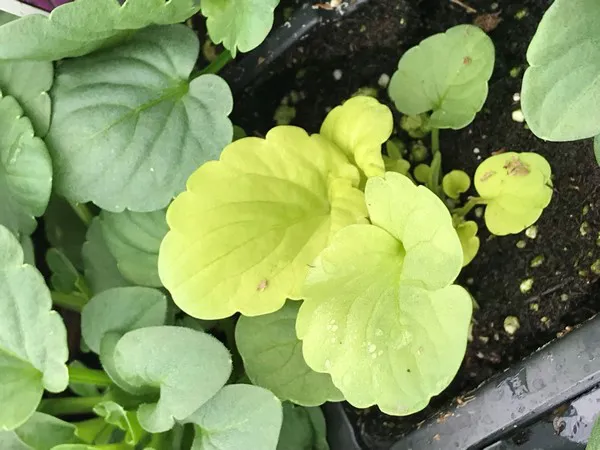Using ammoniacal nitrogen fertilizers such as 20-10-20 during cold, cloudy weather can lead to ammonium toxicity. During these extended periods of cool and overcast weather, substrates are more easily saturated and therefore deprived of oxygen. Low temperatures and low oxygen levels in the growing medium suppress nitrifying bacteria, which may cause ammonium to build up to toxic levels.

Symptoms of ammonium toxicity begin as interveinal chlorosis, chlorotic blotches, and pale green foliage and can be easily confused with iron deficiency. In mature plants, leaf margins may curl downward or upwards depending on the crop, and roots will develop brown necrotic tips and be fewer in number overall. Tomato, eggplant, and pepper transplants are very sensitive to high ammonium levels. Other crops that are sensitive to too much ammonium in the substrate include coleus, pansy, salvia, zinnia, and lettuce.
To avoid ammonium toxicity, limit or discontinue the application of ammoniacal nitrogen fertilizers during extended periods of cold and cloudy weather. Instead, use fertilizers with a balanced ratio of ammonium and nitrate nitrogen sources. Examples include 15-0-15, 13-2-13 Cal-Mag, 15-5-15 Cal-Mag, and others. Avoid keeping the substrate too wet and increase the pH of the substrate to help convert ammonium to nitrate. Keep substrate pH at the higher end of the crop recommendations. Maintain greenhouse temperatures above 60oF. If you have symptoms of ammonium toxicity, increase substrate temperature by raising the air temperature, switch to a fertilizer with no ammoniacal nitrogen, and leach the substrate with clear water, and make sure to allow it to dry down between irrigation events.
Source: umass.edu
